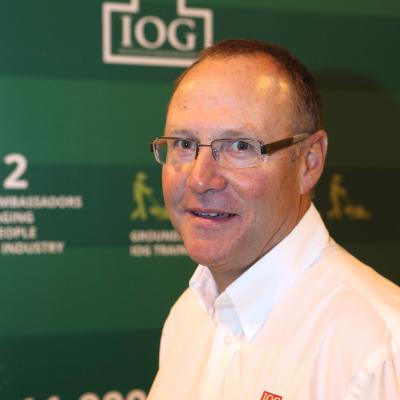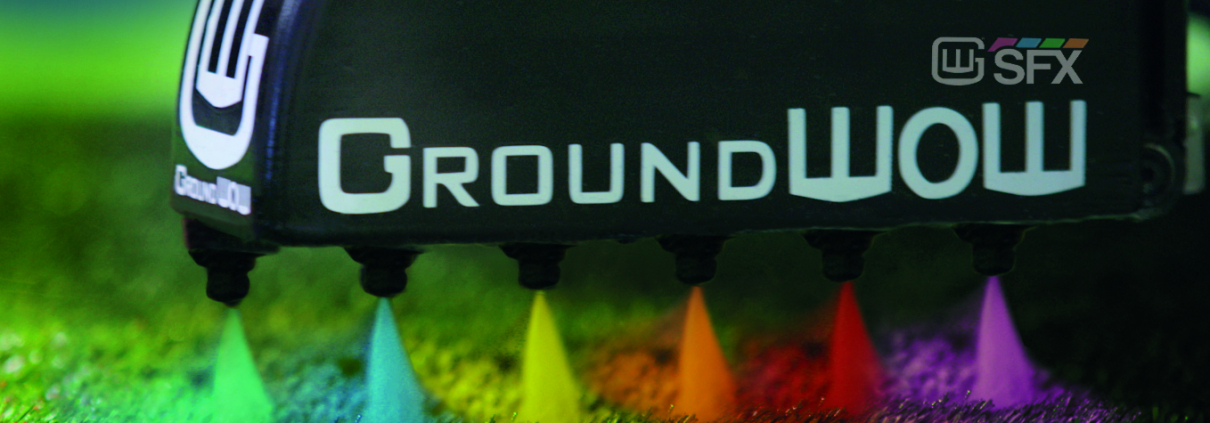So, how are we doing?
So, how are we doing?: By Ian Mather-Brewster, Key Account Manager/Regional Pitch Advisor at the Grounds Management Association.
This year has been particularly difficult for everyone. Sport clubs and organisations have dealt with sudden openings and closures, along with furloughs, adverse weather conditions and relentless uncertainty.

So, how are we doing?
However, throughout the upheaval, grounds staff – whether volunteer or professional – have continued to work hard each day, holding sport together by ensuring pitches are ready to go at a moment’s notice. At the GMA, these challenges are the reason we felt that this year was the perfect time to launch GroundsWeek.
This inaugural celebration week was an opportunity to give all those in the industry the much-needed credit they deserve, while welcoming others into the sector. Here’s a run-down of how the sector’s doing as sport begins to unlock, and why grounds staff are so central to making sport possible.
Volunteers at the helm
The importance of outdoor exercise has been hugely emphasised as a result of Covid-19. While gyms and other indoor sport facilities have been closed, outdoor facilities have acted as a lifeline for the public to go out and exercise during this turbulent period. Grounds staff have played a pivotal role in making this happen.
Volunteers at local clubs have used their permitted daily exercise to ensure these local pitches continue to be ready to be used at a moment’s notice, giving the public a place to exercise and play. It’s no secret that sport has a transformative impact on our wellbeing – after the past year, the need to supercharge both our mental and physical health is going to be paramount. With the pandemic having had a devastating fallout on mental wellbeing, it’s essential that the public have access to outdoor sport facilities once we’re permitted to play.
After the initial national lockdown was announced last year, volunteer grounds staff had to get surfaces back to a top standard after facilities had been unused for quite some time. Volunteers had to suddenly adopt different skills and learn new ways of working. With industry guidance about how to return and when it was safe to do so, grounds volunteers across the country were able to get back out there and provide high quality, playable surfaces.
Getting the professional game back on
Professional sport resuming during the pandemic has also been a lifeline for many – something to focus on and enjoy, it has also acted as a conversation starter for many who’ve been sat at home with very little to do or talk about. While many are keen to get back to playing themselves with their local teams, friends and family, being able to watch your favourite team play on TV has been a welcome distraction from the outside world. With professional sport having the power to lift us up in times of turmoil, grounds managers and staff’s role in making that possible has been pivotal.
Some staff have worked completely on their own throughout the pandemic, without the help of volunteers or a team, yet still have managed to produce immaculate surfaces which have been televised for professional games. They’ve also had new, additional responsibilities: sanitising all equipment before and after large-scale games in huge venues – many have miraculously managed to do this single-handedly. Reduced budgets from the previous season have meant smaller renovations for many professional sport facilities, however, grounds managers and volunteers have still managed to produce top-standard playing surfaces, despite the condensed season leading professional sport grounds to be used far more often than usual, multiplying the workload for grounds managers and volunteers.
Due to the pandemic, clubs and organisations within professional sport have also had to increase the number of areas used for training to comply with safe distancing rules, with some lower league clubs having had to train at bigger stadiums to reduce risk – this has meant grounds staff have had an even bigger job to do in making sure all these areas are ready for use, time and time again.
At cricket clubs, grounds workers have had to start preparing and covering practice areas far earlier than usual – usually, cricket players would get flown overseas for international fixtures, but currently they are stuck in the UK, meaning these pitches need to be in top condition consistently.
The unsung heroes of sport
Despite the strain put on grounds managers and volunteers at a grassroots and professional level, they have continued to keep facilities in top condition so that we can continue to play after lockdown. Grounds staff are the overlooked upholders of sport, without whom, the game simply could not go ahead.
Among furloughs taking place, budget cuts and a lack of investment, as well as the shorter seasons but the same number of games on the pitches, the grounds industry has had to put more effort than ever before into keeping sport pitches playable, and have managed to do an incredible job. Without grounds staff, sports pitches would be non-existent, compromising the future of sport as we know it.
Grounds staff have also gone beyond keeping sport pitches immaculate – to giving up space at their grounds to allow for Covid-testing to take place, and local clubs have helped set up food banks as well as assisted in delivering food to the vulnerable. The grounds community has had to become more resilient than ever, sticking together in the face of unwanted criticism, and
keeping sport going through these difficult times.
Joining the sector
Despite this, we know the sector is facing a crisis – without a new generation of grounds staff and volunteers, there will be a knock-on effect both for the public wanting to get active, and on professional games. Grounds maintenance requires considerable knowledge, time and dedication to provide a pitch that meets rigorous standards set out by professional sporting bodies, with year-round attention to detail, and intensive labour to ensure surfaces get enough care.
GMA’s new research* shows that young people aren’t considering grounds management as a career, and the grounds sector is facing a significant skills gap as a result. Our research shows that 40% of the workforce is over 50, and 9% of grounds managers and volunteers will be retiring in the next five years. If things continue the way they’re going, unfortunately, 5,120 pitches across the UK could be left without a grounds person soon. However, hope is not lost: 6,000 young people are needed to join the profession, to help the turf care sector get on the road to recovery.
#GroundsWeek was a call on the nation to celebrate the vital contribution of grounds staff, while urging young sports fans to consider the profession. The week was set up to celebrate the vital role that professional grounds staff, volunteers, and the turf sector plays in making sport possible. After what has been a really difficult year for the sector and beyond, we wanted to use this celebration to showcase grounds staff and the brilliant work that they do – and have continued to do – despite sport stopping and starting. #GroundsWeek, which will continue each year, is an opportunity to celebrate our sector, and emphasise the vital role grounds staff play in driving sport forward, from grassroots to a professional level. We’re hoping sports fans and the general public have been inspired to consider volunteering at their local pitches or joining the sector as professionals in the future.
*(Data gathered from Sport England’s Active Lives report, GMA’s Sports Vital Profession Report and Back to Play)


















